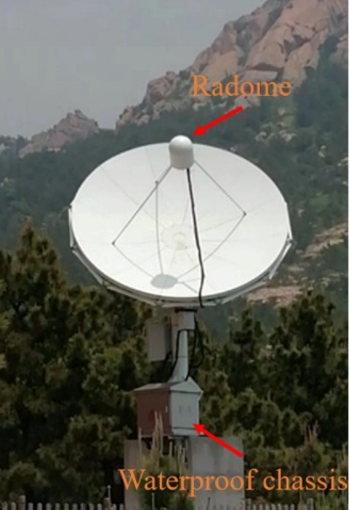In the decimeter to centimeter wavelength, solar radio emission during bursts are generally accepted to be generated by gyrosynchrotron. The typical gyrosynchrotron spectra present reverse-V shapes. And the spectral parameters, including the peak frequency, peak flux and declining spectra etc. can provide crucial information of the bursts. The spectral peak usually appears around 10 GHz. And it is demanded that a continuum observation can cover this frequency range. Meanwhile, the emission in this frequency ranges is emitted by the same group of energetic electrons that generate Hard X-ray in the flaring region, according to the well-known trap plus precipitation effect. And it is thus convenient to cross-verify the dynamic scenario of the energetic phenomena with both data. Therefore, the development of a broadband solar radio telescopes from several to about 20 GHz can provide unique information to the solar radio community.
To further improve the time and frequency resolution of centimeter band radio telescopes, we have adopted a series of new technologies and methods to develop a solar radio observation system from 6 to 15 GHz. We can call it the Chashan broadband spectrometer in the centimeter band (CBScm). Compared with the current centimeter band solar radio telescope, the system developed in this study has the advantages of a large instantaneous bandwidth, high sampling accuracy, high time resolution and high frequency resolution. As a new solar radio telescope, its time resolution reaches a very high level of 0.26 ms with a frequency resolution of 3 MHz, which is very conducive to observing the fine structure of radio burst signals. In this system, the receiving antenna we use is a 3 m diameter parabolic antenna with large gain and good directivity. Regarding the analog receiver, we use a combination of direct acquisition and primary frequency conversion to reduce the interference caused by multiple spectrum shifting in traditional observation systems. A digital receiver with a high sampling rate and high resolution is used to obtain large instantaneous bandwidth data and improve the sensitivity of the receiver. Since its operation, the observation system has observed several solar microwave eruptions, which will provide more high-quality observation data and more powerful data support for the study of solar and space weather.

Figure 1. Prototype of CBScm.
The CBScm began its routine observations since December 2022. A comparison between data of this system and Learmonth solar radio data is shown in Figure 2. According to a relative calibration, the CBScm data (Panel b) show an identical timeprotime of the Learmonth data (Panel a) during the burst on Jan. 11th 2023. This implies that the calibration method adopted in this article is effective. The CBScm can also show dynamic spectrum of the Sun. As illustrated in Figure 3, these data can provide more valuable information in both the time and frequency domain, e.g. the continuum of the gyrosynchrotron etc.

Figure 2. (a) The data observed by the Learmonth solar radio system. (b) The data observed by the 6-15 GHz solar radio observation system.

Figure 3. Dynamic spectrum of solar radio bursts of 6-15GHz.
Based on a recently published article: Lei Zhang (张磊), Yanrui Su (苏艳蕊), Zhao Wu (武昭), Shuwang Chang (常树旺), Yao Chen (陈耀), and FaBao Yan (严发宝)*. A New 6-15 GHz Solar Radio Observation System, The Astrophysical Journal Supplement Series, 268:27 (2023), DOI:10.3847/1538-4365/ace7cc
Additional info: Yan Fabao’s homepage https://faculty.sdu.edu.cn/yanfb.
References:
Tan, B. 2022, Research in Astronomy and Astrophysics, 22,072001.
Wang, Y., Dong, Z., Lu, G., et al. 2022, PASA, 39, e030.
*Full list of authors: Lei Zhang (张磊), Yanrui Su (苏艳蕊), Zhao Wu (武昭), Shuwang Chang (常树旺), Yao Chen (陈耀), and FaBao Yan (严发宝).
